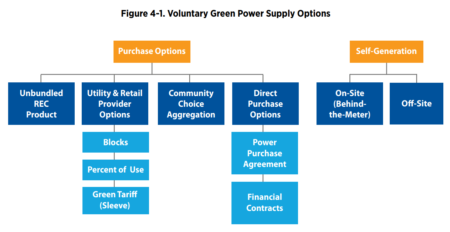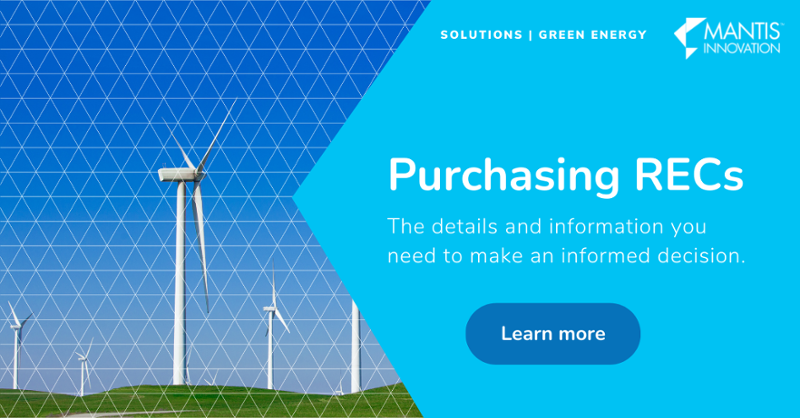Sustainability | February 10, 2022
3 Ways to Work on Your Net Zero Targets
Businesses across the globe both big and small are talking about net zero. Some have already set goals to achieve net zero within a particular timeframe or to reduce net greenhouse gas emissions (GHG) by a specified amount by a certain date. That’s the easy part. The harder part is knowing how to get it done.
You may be asking yourself what reaching net zero entails. One commonly used definition says:
“Net zero refers to the balance between the amount of greenhouse gas produced and the amount removed from the atmosphere. We reach net zero when the amount we add is no more than the amount taken away.”
GHG can be emitted from many things, but the most significant source worldwide is from using energy. For many organizations, facility operations can be the largest source of GHG. In fact, according to the United Nations Environment Program, buildings and their construction together account for 36% of global energy use and 39% of energy-related carbon dioxide emissions annually.
How are greenhouse gas emissions happening?
Building-related GHG emissions mostly result from a combination of energy used to heat, cool, light, and power all the things inside the building. Most of that energy emits GHG either through using electricity where the GHG is generated at the power plant or from burning natural gas or other fuels directly in the building. GHG emissions can be of concern to a company beyond the buildings they operate. Some types of operations generate GHG, vehicle fleets, subcontractor operations, excess flight or travel, can all contribute to a company’s carbon footprint. Reducing GHG – or achieving true net zero – requires that this energy use either be reduced or that it come from sources like solar or wind power that don’t emit GHG.
How to get to net zero
Fortunately, even though getting to net zero is a large task to take on, there are a few clear starting points available to many types of facilities and organizations out there. Here are our top three recommendations:
- Use Less Energy. We think this is the best place to start. Making your buildings more efficient means they produce less GHG, and they are less expensive to operate now and in the future.
- Produce renewable energy that doesn’t produce GHG emissions. For many companies, some or all of the energy used in buildings can be produced on-site, or at a specially constructed offsite location, using solar or wind power or other renewable energy sources. This locks in low-cost power for 15 years or more.
- Purchase green energy with RECs. Private developers and public providers produce large-scale renewable energy that is available for purchase either directly or indirectly through the purchase of RECs, or renewable energy credits.
Top 3 ways to get to work on your organization’s net zero goals
Develop an energy efficiency project plan with a controls strategy
Energy efficiency, as a tactic for better building performance, has been around for decades – much longer than net zero goals. However, the tactics you can take when it comes to energy efficiency can play a big role in meeting sustainability goals and net zero targets. After all, the best kWh you can manage is the one you don’t use!
Energy efficiency can mean a lot of different things. The following are the most effective energy efficiency solutions available to today’s commercial and industrial buildings, they also offer the best incentives in most areas:
- LED lighting with advanced controls: especially if you have locations in the northeast part of the US or tri-state region, LED lighting projects are incentivized by local utilities and offer many companies a quick “win” when it comes to energy efficiency. Increasingly, we’re seeing the best projects also incorporate lighting controls to increase savings and improve operational function.
- HVAC retrofit of existing equipment: replacing old, inefficient HVAC and mechanical systems with new, more efficient models (like boilers, chillers, AHUs, pumps, etc.) can generate huge savings. However, most building professionals don’t know where to begin. HVAC systems vary so widely that an upgrade decision isn’t plug-and-play, so it is important to engage professionals to evaluate your space and help you make those decisions.
- Integrated building management systems strategy: building management controls are the differentiator between a good energy efficiency program and a great one. The companies that integrate their building control systems, and use that data to make informed decisions, will see better efficiency results. Adding sensors and tying everything back to a central system is a critical element of sophisticated efficiency strategies. These controls allow for granular decisions about energy use and software-enabled choices around how and when equipment should operate.
Depending on your area, many of these projects can be partially or even fully subsidized using utility incentives.
Install solar solutions
As the diagram below shows, the on-site generation of energy is another way to manage the emissions your organization produces through the energy you consume. Solar solutions are one of the best and most accessible options for many companies looking to generate their own green energy.
Over the past 15 years, local, state, and federal solar incentives have provided financial fuel for businesses to initiate and expand their renewable portfolios. These incentives come in the form of tax credits, rebates, renewable energy credits, and the ability to accelerate the depreciation of these assets.
Three common ways to pay for a solar project include:
- Cash Purchase – Pay for all equipment and labor, then own, operate, and maintain the asset. The cost is high, but you’ll realize the financial incentives yourself and usually experience a payback period of well less than 10 years.
- Lease – Engage a third-party solar developer or financial institution and lease the asset. In this scenario, you would usually have no out-of-pocket expenses, but the leaseholder realizes the financial incentives.
- Power Purchase Agreement (PPA) – This option generally includes a third-party solar developer who pays for, then owns, operates, and maintains the asset. In this case, the building owner, again, has no out-of-pocket expenses, but simply agrees to a PPA contract, and purchases the energy produced at a fixed cost for 15-25 years. The developer again enjoys the available financial incentives.
To get started, you’ll want to get an independent assessment of your solar options including array placement, design, and available contracts. For rooftop solar, it is also vitally important to have your roof(s) assessed to ensure they will endure the term of any solar contract.
Purchase green energy by investing in RECs
Finally, purchasing green energy in the form of Renewable Energy Certificates (RECs) is one way to offset greenhouse gas emissions. In many areas, you have the option to purchase green energy directly from your broker, utility, or supplier.
Investopedia offers a succinct definition of RECs: “Renewable Energy Certificates (RECs) are a market-based instrument that certifies the bearer owns one megawatt-hour (MWh) of electricity generated from a renewable energy resource.”
Purchasing RECs is the equivalent of purchasing renewable energy because it’s a verification that the energy you’ve purchased from your utility originates from renewable sources. This is an easy way to offset your carbon footprint and support the clean energy movement.
Here are a few green energy purchasing options, including RECs, as laid out by the EPA:

Image source: EPA’s Guide to Purchasing Green Power
It’s easier to start working towards net zero than you might think
Net zero feels like a really big goal. And it is – we don’t want to minimize how much work it takes for companies (especially those responsible for a portfolio of buildings or hundreds of locations) to lower their emissions and manage energy, water, waste, and more to the point of being net zero. However, many companies are in a position to take that first step. These 3 ways of how to work on net zero targets – green energy, solar, and energy efficiency – all offer facility management concrete actions to take that will generate clear results.
When you’re ready to act, be sure to leverage experts like Mantis Innovation’s team of strategic, facility solutions professionals so you can take the right next steps and ensure that today’s decisions align with your goals for the future.
Related Posts
Discover more content and insights from Mantis Innovation

Carbon Credits Explained: A Primer for Achieving Your ESG Goals
In the race to achieve net-zero emissions, carbon credits have become a crucial tool for companies with hard-to-abate emissions. As of 2024, almost half of the Fortune 500 companies have net zero

Five Trends Driving Data Center Facility Energy Optimization
Today’s digital economy, commercial and industrial digitalization, and the recent explosion in artificial intelligence and machine learning (AI/ML) powered computing are driving massive growth in

Modernizing Manufacturing Facilities: The Drivers and Direction
This blog is just a glimpse into the deep dive we take in our new white paper, Modernizing Manufacturing. Download the white paper here to skip the teaser and get the whole story. The stage is set

Federal and State Policies Driving Commercial Fleet Electrification
As governments and industry transition to a low-carbon economy, regulations have begun rolling out at the federal level and in leading-edge states focused on commercial fleet electrification. Policy
